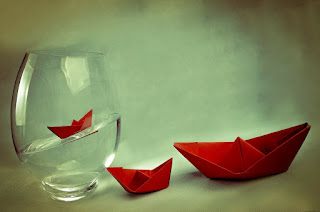
class 10 chemistry important question 2020

CHAPTER- 1 CHEMICAL REACTIONS
PRACTICE QUESTIONS
1 mark question
1. Why do we store Silver chloride in dark colored bottles?
2.Identify the type of
reaction
(a) 2 AgNO3 + Cu → Cu (NO3)2
+ 2 Ag
(b)
2 SO2 + O2 → 2 SO3
2 marks question
3. What change in the colour of iron nail and copper sulphate solution do you observe after keeping the iron nail dipped in copper sulphate solution for about 30 minutes? Write the equation involved.
4.Balance the following
equations:
(a)
Fe + H2O → Fe3O4
+ H2
(b)HNO3+Ca(OH)2 →Ca(NO3)2+H2O
5.Identify the substance
oxidized, reduced , oxidizing agent and reducing agent:
MnO2
+ 4 HCl → MnCl2 + 2 H2O+Cl2
6. (a) What is rancidity?
(b) Write the common methods to prevent it?
3 marks questions
7. What happens when aqueous solution of Sodium sulphate and Barium chloride are mixed together? Give a balanced equation for the reaction and write the state symbols. Name and define the type chemical reaction involved in the above change.
8. 2 g of ferrous sulphate crystals were heated in a hard glass test tube and observations are recorded.
(a) What was the successive color change?
(b) What type of odour is observed?
(c) Name the products obtained.
(d)What type of reaction is this?
(a) Thermal decomposition
(b) Electrolytic
decomposition
(c) photolytic decomposition.
5 marks questions
10.Sonia has been collecting silver coins and copper coins. One day she observed a green coating on copper coins and a black coating on silver coin.
(a) Which chemical
phenomenon is responsible for these coating?
(b) Write the chemical
name of black and green coatings.
(c) Explain with equations involved.
11. A reddish brown metal X on heating in presence of Oxygen forms a black coloured compound Y which is basic in nature and when heated with Hydrogen gas gives back X. Identify X and Y. Write the chemical reaction between Y and Hydrogen.Identify the substance being oxidized and reduced.
ACIDS, BASES AND SALTS-CHAPTER 2
1 MARK QUESTIONS
2 MARKS QUESTIONS
3 MARKS QUESTIONS
5 MARKS QUESTIONS
(e)Also list two uses of the compound.
METALS AND NON METALS- CHAPTER-3
1 MARK QUESTIONS
1. A non -metal X can exist in two different forms and they are Y and Z. Y is the hardest natural substance and is very expensive whereas Z is a good conductor of electricity. Identify Y and Z.
2. Why ionic solids do not conduct electricity?
3. Name the metals involved in the electrical activity in nerves and muscles.
4. Name the type of oxide formed when non-metals combine with oxygen.
2 MARK QUESTIONS
5.Show the formation of magnesium chloride by the transfer of electrons?
6. What are the constituents present in solder alloy? Explain the property of solder which helps us to use it for welding electrical wires?
7.A metal can exists as a liquid at room temperature
and it is obtained by heating its sulphide form in the presence of air.
(i) Identify the metal and its ore.
(ii)the reactions involved.
8.Explain the terms:
(a) roasting
(b) calcination.
3 MARKS QUESTIONS
9.(a) What are amphoteric oxides?
Choose the amphoteric oxides amongst the following oxides.
Na2O, ZnO, Al2O3, CO2 ,H2O
(b) Why metals do not displace Hydrogen when reacted with dilute Nitric acid?
10. Write the chemical equations for the reactions taking place when:
(i) Zinc sulphide is heated in air
(ii) Calcination of Zinc carbonate is done
(iii) Magnesium dioxide is heated with Aluminium powder.
11. Give reason-
a. Articles which are made up of aluminium do not corrode easily even though aluminium is an active metal.
b.Carbon can not be used for making aluminium from aluminium oxide.
c. Sodium and Potassium are stored in kerosene oil.
12.( a) What are alloys?
(b)What are the alloys called amalgams
(c) Give two examples of alloys containing copper as one of the constituents.
5 MARKS QUESTIONS
13. (a)What is meant by refining of metals?
(b)Name the most widely used method of refining impure metals produced by various reduction processes.
(c)Describe with the help of a labelled diagram, how this method may be used for refining of Copper.
14.(a)Name a liquid metal which does not stick to glass.
(b)Name a non metal which is a good conductor of electricity.
(c)Name the metal which is commonly used in thermite welding.
(d)What gets deposited at the cathode, a pure metal or impure metal?
(e)What is the nature of ZnO?























































